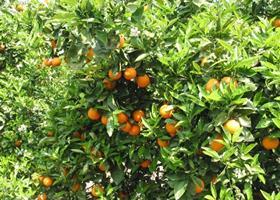
California’s Department of Food and Agriculture (CDFA) has forecast the March 2014/15 Valencia orange crop at 20m cartons, based on results from its latest measurement survey.
Drought in many areas has adversely affected fruit-set, the CDFA said. But measurements indicate average fruit size.
“Survey data indicated an average fruit set per tree of 545, well below the five-year average of 639 and the lowest set since the 2008/09 season,” the CDA said. “The average 1 March diameter was 2.571 inches, slightly above the five-year average of 2.562.”
Nevertheless grower-shipper Tom Wollenman of LoBue Brothers anticipates a better export deal for California Valencias than the state’s navels, shipments of which were affected by port delays and advanced maturity.
He told Fruitnet that the Valencia deal is progressing normally with fruit showing good sizing and appearance.
“The Valencia deal is likely to end up better than navels this year,” said Wollenman. “Maturity levels are normal and the fruit appears to be peaking on (count) 113s, then 138s and 88s equally. Smaller fruit is what all markets – export and domestic – have come to prefer with Valencias over the last ten years or so.”
More typically suited for juicing, fresh Valencias are exported to Pacific Rim markets, particularly to South East Asia.
“There’s no urgency for picking Valencias just yet as there are too many navels that need homes,” said Golden. “If fruit isn’t moving profitably into the fresh market, juicing is always a good option for Valencias.”
According to the USDA, as of 2013 bearing acreage for Valencias stood at approximately 14,600ha down from 16,200ha in 2011 and 30,000ha in 2000. Much of the state’s acreage has been pulled from production in favour of more profitable crops such as tree nuts. In recent seasons, Valencia acreage has stabilized, since production appears to be more in balance with demand.






No comments yet